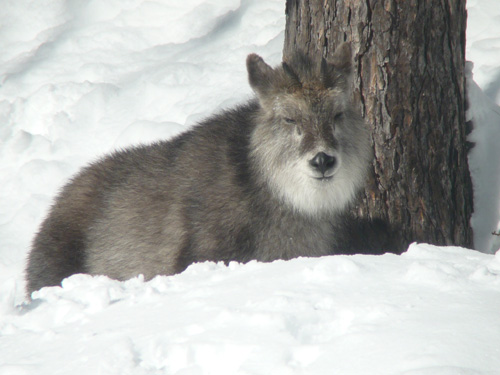The Japanese Serow: A National Treasure of the Forest


Introduction to the Japanese Serow
The Japanese serow (Capricornis crispus) is a remarkable even-toed ungulate that is endemic to Japan. This stocky goat-antelope has earned its place as a living national treasure, captivating both scientists and nature enthusiasts alike. Found predominantly on the main island of Honshu, as well as in parts of Shikoku and Kyushu, the serow thrives in the dense, mountainous woodlands that characterize these regions.
Conservation and Protection of the Japanese Serow
Designated a special natural monument in 1955, the Japanese serow was recognized for its vulnerable status and the need for conservation. The designation was a significant step towards protecting this species from poaching and habitat destruction. The Japanese government, alongside various conservation organizations, has worked diligently to ensure the survival of this iconic mammal. Efforts include habitat restoration and the establishment of protected areas, which have been crucial in maintaining the serow population.
The Unique Characteristics of the Japanese Serow
The Japanese serow is easily identifiable by its distinct, stocky body and long, curved horns. Their coat is typically dark brown to grayish, providing excellent camouflage against the forest floor. Highly adapted to their mountainous environment, these animals possess exceptional climbing abilities, which allow them to navigate steep, rocky terrains with ease. Solitary by nature, the serow often roams alone or in small groups, embodying a spirit of independence that mirrors the untamed essence of Japan's mountainous forests.
As herbivores, Japanese serows primarily feed on a variety of vegetation, including leaves, shoots, and grasses found in their forest habitat. They are most active during the early morning and late afternoon, taking advantage of the cooler temperatures to graze and forage. Their presence in the ecosystem is vital as they contribute to the natural balance by maintaining vegetation growth and providing food for larger predators.
In summary, the Japanese serow is not only a fascinating species but also a symbol of Japan's rich natural heritage. Its status as a national treasure highlights the importance of conservation and the need to protect the biodiversity of the region. Continued efforts to safeguard this unique mammal will ensure that future generations can experience the awe and wonder of observing the Japanese serow in its natural habitat.
